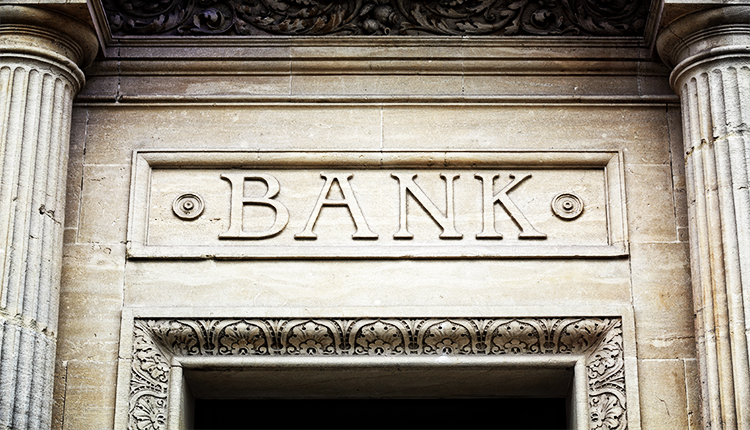Regarding financing, personal and secured loans are popular options for individuals needing funds for various purposes, from consolidating debt to making large purchases.
These loans come with their own rules, interest rates, and conditions, making it essential for borrowers to understand their nuances before committing.
This comprehensive guide delves into the intricacies of personal and secured loans, helping you make an informed decision.
Let’s begin!
What Are Personal Loans?
Personal loans are a form of closed-end credit, providing borrowers with a lump sum paid back in fixed monthly instalments over a predetermined period, typically three to five years.
The interest rate on these loans, represented as the Annual Percentage Rate (APR), encompasses any fees and costs associated with the loan, excluding compounding effects and inflation. Most lenders use the monthly periodic rate, derived from the APR, to calculate monthly payments, determining the total borrowing cost.
The Cost of Borrowing

When banks lend money, they first need to source these funds through other banks or customer deposits at an interest rate influenced by the federal funds rate. This base cost, plus the risk associated with lending without a repayment guarantee, dictates the interest rate offered to borrowers.
Several key factors influence this rate:
- Creditworthiness: Individuals with higher credit scores generally receive better interest rates due to their lower risk of default.
- Income and Employment: Stable employment and a higher income improve the chances of obtaining a loan with favourable terms, suggesting a higher likelihood of repayment.
- Loan Term: Longer loans typically have lower interest rates since they accrue more interest over time, benefiting the lender.
- Collateral: Secured loans, which require collateral, often come with lower interest rates than unsecured loans, reflecting the lower risk to the lender.
Secured VS Unsecured Loans: Everything you Need to Know
The choice between secured and unsecured loans depends on the borrower’s needs, creditworthiness, and ability to provide collateral.
Secured Loans:
Secured loans require an asset as collateral, which the lender can seize if the borrower defaults. This category includes mortgages, auto loans, and home equity lines of credit.
The advantages of secured loans lie in their lower interest rates, easier qualification criteria, higher borrowing limits, and longer repayment terms. However, the risk of losing the collateral is a significant drawback. This type of loan is often preferable or the only option under certain conditions:
- Purchasing Property: When buying significant assets like a home or vehicle, a secured loan offers the financial heft needed for such large investments.
- Credit Challenges: If your credit score isn’t strong enough to qualify for an unsecured loan with favourable interest rates, a secured loan might be your pathway to borrowing.
- Substantial Debt Over Long Terms: For large debts requiring extended repayment periods, such as mortgages, secured loans are typically used due to their lower interest rates and structured payment plans.
Unsecured Loans:
Unsecured loans, on the other hand, do not require collateral. Qualification is based on the borrower’s credit score and history. This loan type may be more suitable in various scenarios:
- Debt Consolidation: An unsecured personal loan can be an excellent tool for consolidating multiple debts into a manageable loan.
- Small or Versatile Borrowing Needs: For those who don’t need to borrow a substantial amount or require flexibility on the use of funds, an unsecured loan offers a solution without tying the debt to specific assets.
- Education Financing: Student loans, particularly federal ones, are a prime example of unsecured loans, providing vital funds for education without requiring collateral.
Pros and Cons of Secured Loans

When considering borrowing money, understanding the various options available is crucial. Secured loans offer distinct advantages and disadvantages, each playing a significant role in shaping your financial decisions.
Pros of Secured Loans:
- Lower Interest Rates: Secured loans typically boast lower interest rates due to the presence of collateral, mitigating the lender’s risk. This translates to potential long-term savings by reducing the amount paid in interest over time.
- Easier Qualification: Even if your credit history isn’t flawless, secured loans often offer easier qualification since the collateral provides added security for the lender. This accessibility can benefit those seeking financial assistance with less-than-perfect credit scores.
- Higher Borrowing Limits: With collateral backing the loan, secured loans often have higher borrowing limits. This feature proves advantageous when substantial funds are required for significant purchases or investments.
- Longer Repayment Periods: Secured loans, especially those secured by assets like homes, frequently offer extended repayment periods. This allows borrowers to spread their payments over longer, resulting in more manageable monthly payments that align with their financial circumstances.
Cons of Secured Loans:
- Risk of Loss: The primary downside of secured loans is losing the collateral if you default. This risk underscores the importance of careful financial planning and timely repayment to safeguard your assets.
- Higher Long-term Cost: While longer repayment periods offer lower monthly payments, they also entail paying more interest over the loan’s lifespan. This can lead to a higher total cost than shorter-term loans, even with lower interest rates.
Pros and Cons of Unsecured Loans
Unsecured loans offer unique benefits and considerations, each crucial in shaping your borrowing strategy. Here are some of the most important pros and cons for unsecured loans:
Pros of Unsecured Loans:
- Flexibility in Collateral: Unlike secured loans, unsecured loans don’t require collateral, offering borrowers greater flexibility. This means you won’t risk losing valuable assets if you default on the loan, providing peace of mind and financial security.
- Quick Approval Process: Unsecured loans often feature a streamlined approval process, allowing borrowers to access funds promptly. Without the need for collateral assessment, the approval timeline is expedited, making unsecured loans an attractive option for urgent financial needs.
- Accessibility for All Credit Profiles: Individuals with diverse credit profiles, including those with less-than-perfect credit scores, can still qualify for unsecured loans. Lenders evaluate various factors beyond collateral, such as income and employment history, enhancing accessibility to a broader range of borrowers.
- Versatile Use of Funds: Unsecured loans offer versatility in using funds, allowing borrowers to address various financial needs. Whether consolidating debt, covering unexpected expenses, or funding personal projects, unsecured loans provide the flexibility needed to achieve your financial goals.
Cons of Unsecured Loans:
- Higher Interest Rates: Unsecured loans typically come with higher interest rates than secured counterparts due to the absence of collateral. This translates to increased long-term borrowing costs, necessitating careful consideration of affordability and repayment plans.
- Stricter Eligibility Requirements: While unsecured loans cater to diverse credit profiles, lenders often impose stricter eligibility requirements to mitigate risk. This may include higher income thresholds, stable employment history, and exemplary credit scores, potentially limiting accessibility for some borrowers.
Understanding Regulation Z

In 1968, the Federal Reserve Board implemented Regulation Z, which created the Truth in Lending Act (TILA). This act protects consumers’ financial transactions by requiring lenders to disclose key loan details. This includes the Annual Percentage Rate (APR), finance charge, total amount financed, and total payments for closed-end personal loans. Additional disclosures, such as the number of payments, monthly payment amount, and penalties for late payments or early loan payoffs, are also mandated.
Regulation Z, particularly under Subpart C—Section 1026.18, mandates lenders to disclose critical information about closed-end personal loans. These disclosures include the APR, finance charge, amount financed, and total payments.
Additionally, lenders must inform borrowers about the number of payments, monthly payment amounts, late fees, and the implications of early loan payoff. Such transparency empowers consumers, enabling them to make informed financial decisions and avoid surprises during their loan tenure.
The Landscape of Personal Loan Interest Rates
As of August 2023, the average APR for a 24-month unsecured personal loan in the United States stood at 12.17%. However, the APR can vary widely, ranging from 5.99% to 35.99%, depending on the lender and the borrower’s credit score. This range underscores the profound effect of a borrower’s financial past and the lender’s evaluation criteria on borrowing costs. In comparison, secured loans, such as a 60-month new car loan, boasted an average APR of 7.88% in the same period, underscoring the interest-lowering benefits of collateral-backed loans.
Calculating Personal Loan Interest
With the insights provided by Regulation Z and an understanding of the average interest rates, borrowers can navigate the personal loan landscape more effectively.
The interest on personal loans can be calculated using one of three methods: simple, compound, or add-on. Each method uses the APR provided by lenders; however, the loan’s total cost can significantly differ depending on the calculation.
1. Simple Interest Method
The simple interest or U.S. Rule method is the most commonly used for personal loans. This method calculates interest solely on the principal amount, making it a straightforward and predictable option for borrowers.
For instance, a $10,000 loan at a 10% APR over five years would have its monthly payment and total interest calculated explicitly, with an option to view a detailed amortisation schedule. This method notably fosters timely or even early payments, resulting in reduced interest costs and, potentially, an accelerated loan payoff.
2. Compound Interest Method
Compound interest adds complexity, particularly with missed payments, by accumulating interest on previously accrued interest, increasing overall amounts. Despite on-time payments, failing to adhere to schedules due to compounding can drastically escalate the total interest paid.
3. Add-on Interest Method
The add-on interest method simplifies calculations, determining total interest upfront, adding it to the principal, and dividing it by payment numbers. This method is often used for short-term or subprime loans, resulting in a fixed payment amount. However, it can also lead to higher overall costs, as the interest is calculated on the full loan amount.
What Constitutes an Advantageous Personal Loan Rate?
Navigating the terrain of personal loans reveals a benchmark for advantageous rates: a figure that undercuts the national average. As of August 2023, this average stood at 12.17%, making any rate below this threshold a potentially lucrative find. A strong financial foundation—anchored by robust income, solid credit history, and collateral—can leverage better deals. This paradigm highlights the necessity of carefully evaluating one’s finances before pursuing a loan, ensuring a well-informed decision.
The Path of Least Resistance: Accessible Personal Loans
The allure of easy access casts a shadow over the landscape of personal loans, where convenience often comes at a steep price. The domain of payday lenders and credit card advances, with APRs that can soar to 780% and 20%. Such exorbitant rates serve as a cautionary tale, highlighting the cost of accessibility. These financial instruments, aimed at diverse borrowers, including those with poor credit, emphasise a key emphasise on accessibility that often presents challenges.
Conclusion
Understanding the dynamics of personal and secured loans is crucial for individuals seeking financial support. These loans offer various benefits and considerations, requiring careful evaluation before making borrowing decisions.
Exploring interest rates, eligibility criteria, and loan types has provided valuable insights into navigating the borrowing landscape effectively.
Whether opting for a secured loan’s stability or an unsecured one’s flexibility, borrowers can now make informed choices tailored to their financial goals and circumstances. With this knowledge, individuals can embark on their borrowing journey confidently and clearly.
















